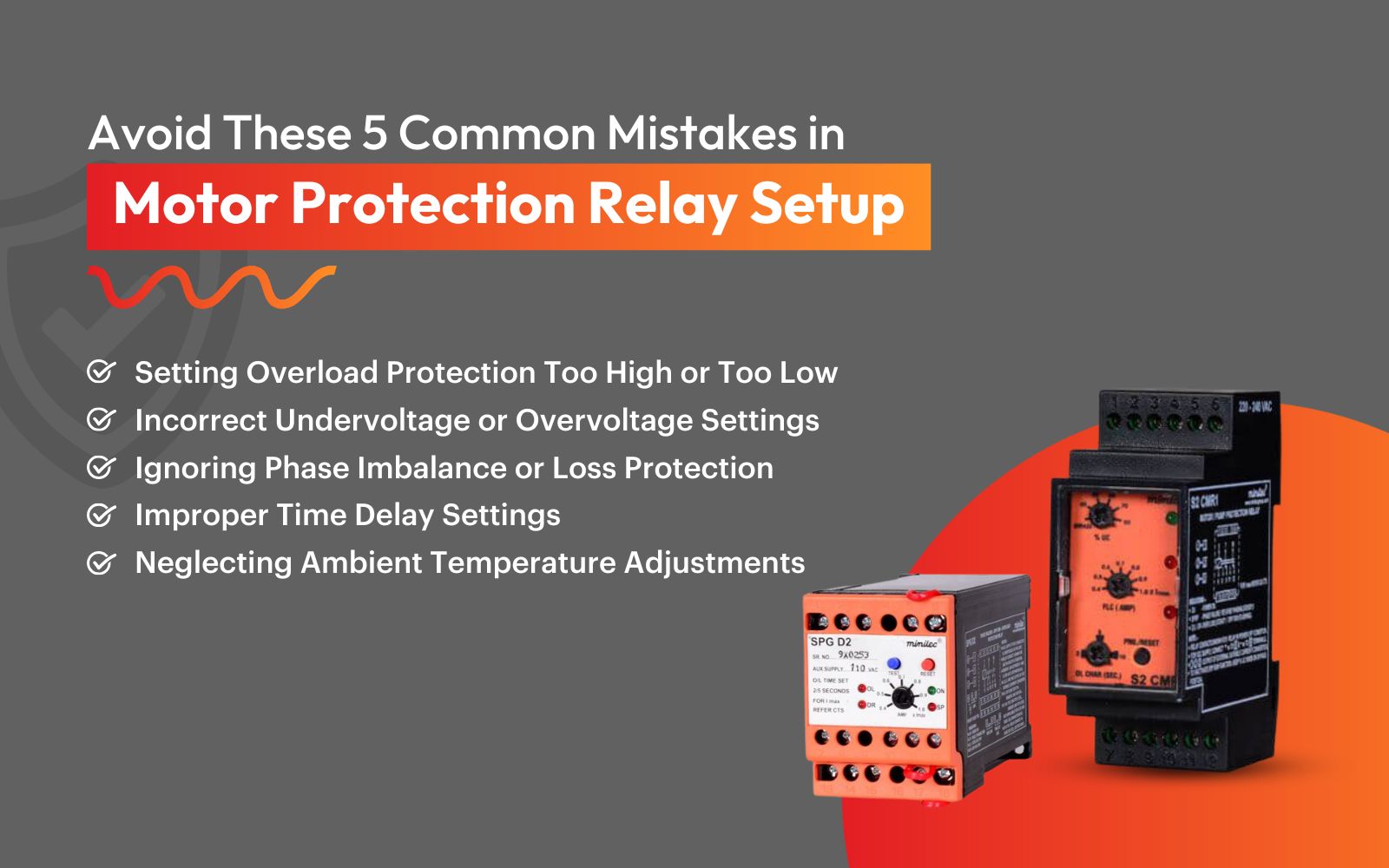Setting up motor protection relays correctly is crucial for safeguarding your motors from damage and ensuring optimal performance. However, many users make common mistakes that can lead to costly downtime and equipment failures. In this blog, we’ll highlight five key pitfalls to watch out for and provide practical solutions to ensure your motors receive 100% protection.
Here are 5 common mistakes when setting up protection levels for motor protection relays:
1. Setting Overload Protection Too High or Too Low
Misconfiguring the overload protection is a frequent mistake. Setting it too low causes frequent, unnecessary trips, disrupting operations, while setting it too high may allow overheating to go undetected, damaging the motor over time.
Solution: Follow the motor’s full-load current rating and ensure the overload protection accounts for NEC’s 125% rule (or manufacturer’s guidelines) to prevent both under- and over-protection.
2. Incorrect Under-voltage or Overvoltage Settings
Motors operating at improper voltage levels for long periods can overheat or fail. Setting the under-voltage protection too high can lead to nuisance tripping, while too low a setting allows the motor to run at harmful voltages, shortening its life.
Solution: Set under-voltage protection to cut off the motor if voltage drops below 90% of its rated level, and ensure overvoltage protection kicks in before excessive voltage causes damage.
3. Ignoring Phase Imbalance or Loss Protection
Phase imbalance or loss is a common issue in three-phase motors and is often overlooked. Failing to configure phase imbalance protection correctly can result in uneven load distribution, overheating, and damage to the motor.
Solution: Set up phase imbalance or single-phasing protection properly, so that the relay detects even minor imbalances and trips before significant damage occurs.
4. Improper Time Delay Settings
Time delay settings control how quickly the protection relay responds to overloads, undervoltage, and other issues. Incorrectly setting the delay—either too short or too long—can cause nuisance tripping or fail to protect the motor from long-term damage.
Solution: Set appropriate time delays based on motor size and application needs, allowing brief voltage drops or temporary overloads without immediately tripping, while still ensuring protection from sustained issues.
5. Neglecting Ambient Temperature Adjustments
Many users fail to account for the ambient temperature where the motor operates. If the protection settings do not account for high or low operating temperatures, motors may trip prematurely or fail to protect in extreme conditions.
Solution: Adjust the protection settings, especially for thermal overloads, to compensate for high or low ambient temperatures, ensuring the motor is protected under real operating conditions.
Talk to Minilec’s experts or service engineers to avoid these critical mistakes and ensure 100% protection for your motors.
